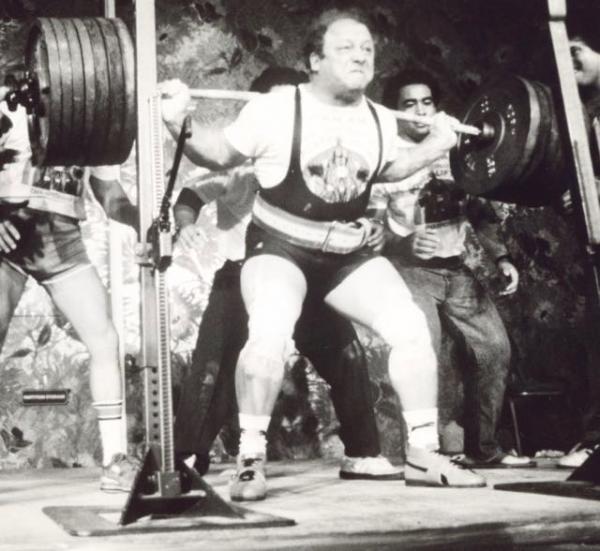Of all the different specialty bars on the market, this is the one I recommend most. The safety squat bar develops great brute strength. It's a phenomenal way to build your lower back, legs, and upper back. The key is to not get too fancy with it. The two exercises I recommend are simple, the good morning and the squat.
When squatting with the safety squat bar, the weight is cambered out in front of you, causing you to feel like it's dumping you forward. This forces you to use your entire back to keep it steady. Yes, it can look ugly when you muscle it up out of the hole, but no one gets points in the weight room for looking pretty.
Not only will squatting with this bar help your squat but it will help your deadlift in every way, from the legs to lower and upper back. Because of the camber of the bar, it's like doing a front squat without the fear of losing the bar forward. Front squats are a great assistance exercise for the deadlift. Think of the safety squat bar as front squatting without having to think about form. Also, the bar is very easy on your shoulders. You don't have to externally rotate your shoulders when using it so it's a great way to add volume to your squat training without the shoulder discomfort. As for the good morning, it's one of the best assistance exercise for your deadlift as few exercises do a better job at training the lower back and hamstrings. The safety squat bar is ideal for good mornings as it also works the hell out of the upper back during the movement; an added component you don't get with the straight bar.
Remember: you will have to get a new TM with this bar. Do not use your straight bar squat numbers for the safety squat bar.
You can also use this bar for your supplemental lifts (Boring But Big, Boring But Strong, First Set Last, Second Set Last, etc.) If you have access to one I also highly recommend using it for Widowmaker sets. Again, make sure you have a correct TM. In this example you would use the straight bar for your main 5/3/1 sets and switch to the safety squat bar for the supplemental work.
I also used this bar for athletes who had shoulder, wrist or hand injuries. Besides the aforementioned squats and good mornings, we also used it for Hise Shrugs - one of the few upper body movements we could do with the injured athletes.
Finally, you can also use the bar as it was originally intended; while holding onto rack handles. I have found this a great way to teach and develop young athletes how to squat (just another tool you can use!). You can also use this same method as an overload method if you are a powerlifter.
There are any number of safety squat bars on the market - I have used many of them and none are more comfortable or durable than EliteFTS SS Yoke Bar. The pad is dense and will last a long time - something that I cannot say for other bars. Buy nice, don't buy twice.
Note: for those that don't know, the safety squat bar was originally called the Hatfield Bar. Named after Fred "Dr. Squat" Hatfield who I believe was the first one to champion the bar. Whether or not he designed/invented the bar, I do not know. However he at least deserves a mention. "You can't fire a cannon from a canoe! You have to weigh anchor."




